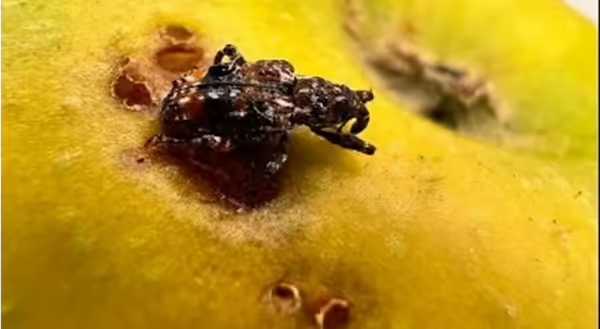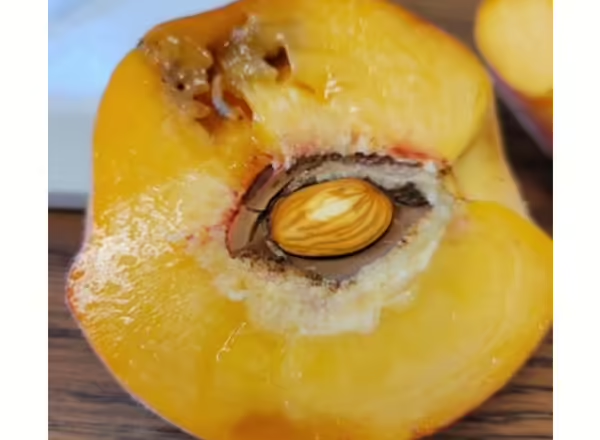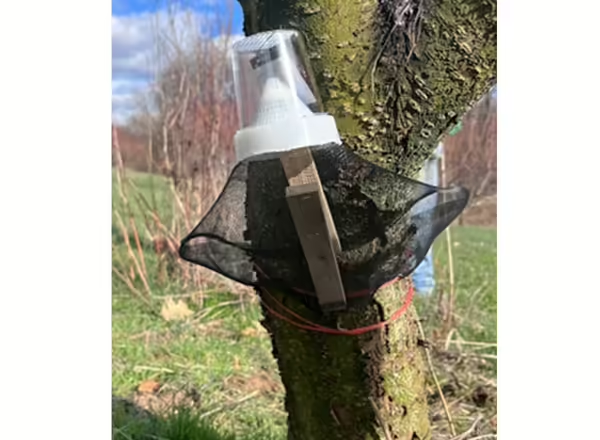
Research update from Karuna Kafle, master's student working in the Specialty Crops Entomology Lab, University of Illinois Department of Crop Sciences
Plum curculio continues to be a serious concern for most peach orchards in Illinois. This tiny weevil lays eggs inside developing fruit; the larvae then feed within, causing fruit damage and reduced yields. Traditionally, plum curculio damage was identified by a crescent-shaped scar on the fruit skin from egg-laying. However, our recent observations suggest that while this is common in apples, as seen in the adjacent photo by K. Kafle, University of Illinois Department of Crop Sciences, it is not as evident in peaches, which makes early detection even more important.
In early spring, plum curculios emerge from overwintering sites and first appear in border rows or perimeter trees. This is the critical window to manage adults before they lay eggs. Once eggs are inside the fruit, insecticide sprays become ineffective. Historically, insecticide recommendations were made mainly for spring, as only one generation was expected. However, our 2023 research confirmed a dominant second generation of plum curculio population in major peach-growing regions. This means control measures must now extend into mid-summer when fruit is fully developed to target the second generation of adults.

From 2023 to 2025, we monitored plum curculio activity in grower’s orchards using trunk and pyramid traps baited with lures, specifically methyl salicylate and benzaldehyde, each combined with grandisoic acid for better trap performance. Unfortunately, severe frost in 2024 led to a total crop loss in southwest-central Illinois which is our primary study area, resulting in fewer adult weevils captured that year. This lower population likely carried over into 2025, when our traps caught only a few adults and fruit injury assessments showed no signs of plum curculio damage. While this is good news for this season, it’s important to remember that low populations can rebound rapidly, so consistent monitoring is still needed.
In addition to field trapping, we also tested lure effectiveness in the lab. We found that traps are less attractive when fruit load is heavier which backs up why we had lower trap catches during peak fruiting in 2023.
Key recommendations moving forward:
- Expand monitoring into mid-summer to detect second-generation adults when fruit is mature and susceptible.
- Rotate insecticides with different modes of action to slow resistance development and always follow bee safety labels and pre-harvest intervals.
- Practice good orchard sanitation: Remove fallen fruit promptly to destroy larvae before they pupate in the soil. Shaking trees can help identify infested fruit; if it drops easily, it likely contains a developing plum curculio larva and should be removed.
We will continue monitoring and share timely updates as we learn more about its changing patterns in Illinois orchards. Stay alert and adjust your management plans to keep your peaches healthy and productive!
